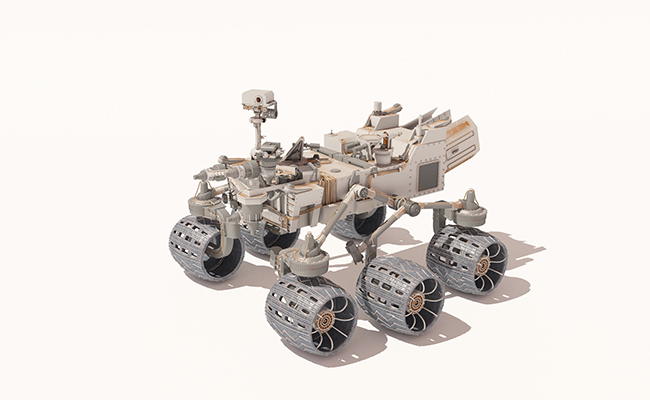
In Turkey, space studies in the modern sense were officially initiated from two different branches: satellite operatorship and satellite production. Towards the end of the 90s, the BILSAT satellite can be seen as a milestone for production activities. With the subsequent RASAT and GOKTURK-2 satellites, a certain maturity was reached in terms of domestic design. In addition to satellite studies, students from various universities participated in ROVER competitions abroad and achieved degrees.
As ASELSAN Research Center, we aim to take part in activities in line with the "National Space Program" put forward by the Turkish Space Agency (TUA).
Bioinspired systems are man-made systems in which one or more of the subsystems are inspired by adaptations that increase the efficiency and functionality of living organisms to perform their vital activities by using the principles of basic and engineering sciences.
Bioinspired and biomimetics are two different methods that are often confused. Bioinspiration differs from biomimetics in the method of inspiration. In biomimetics, the specialized structures of living things are directly imitated with all their features and transferred to man-made systems, while in bioinspiration, the theoretical infrastructure underlying the efficiency and functionality provided by these specialized structures is transferred to the system with different types of structures.
Bioinspired systems, which can be used in many areas from architecture to the entertainment industry, are the development of solutions to practical problems by taking inspiration from the achievements of living things over millions of years of adaptation.
ASELSAN R&D Management Deputy Directorate Research Center carries out studies in the field of robotics and unmanned systems, which include mechanisms designed with inspiration from nature.
 Biomimetics is a multidisciplinary approach derived from the Latin words "bios" (life) and "mimesis"
Biomimetics is a multidisciplinary approach derived from the Latin words "bios" (life) and "mimesis"
(imitation), where processes in nature are applied to man-made systems by using the principles of basic and engineering sciences.
We observe the widespread effects of this approach in many different fields such as art, architecture and engineering. Today, in order to find innovative and effective solutions to the technological problems we face, we are following the clues in nature more and more and making more use of this approach called biomimetics.
One of the most frequently used technological areas of this approach is undoubtedly the rapidly developing robotics technology. Robots, which are inspired by the mobility of many animals and plants in nature, reduce the workload of humans in difficult conditions in side roles such as load carrying and exploration.
Structural and functional materials developed by utilizing many other properties of living organisms, apart from their mobility, increase success in harsh conditions. Night vision camera systems inspired by the corneas of moths and butterflies, which provide sharp vision even in low light conditions; orange sunglasses inspired by penguin eyes, which provide pilots and sailors with clearer vision in bright light, haze and fog; and boots designed based on a strong adhesion system found in the Gecko lizard's feet are just a few examples.
In recent years, unmanned systems have become widespread rapidly due to the development of technology. In many application areas, joint task teams consisting of different unmanned elements brought together for a specific mission are expected to autonomously fulfill the given task.
In the studies on heterogeneous (different) unmanned systems conducted at ASELSAN Research Center, it is aimed to provide the capabilities required by the mission at the team level in cases where unmanned elements have autonomy at the individual level.
The mission planning capability includes the evaluation of a mission with the current initial conditions, the assignment of teams by taking into account the payloads of the available unmanned elements, the configuration of the team, and the digitalization of the team's operational plan in line with the field and operational conditions.
It is important to develop decision-making capability at the team level in accordance with the operational plan by utilizing the situational information obtained by the team members during the mission. For this purpose, algorithm development studies are being carried out using machine learning techniques to improve mission planning and decision-making capabilities.